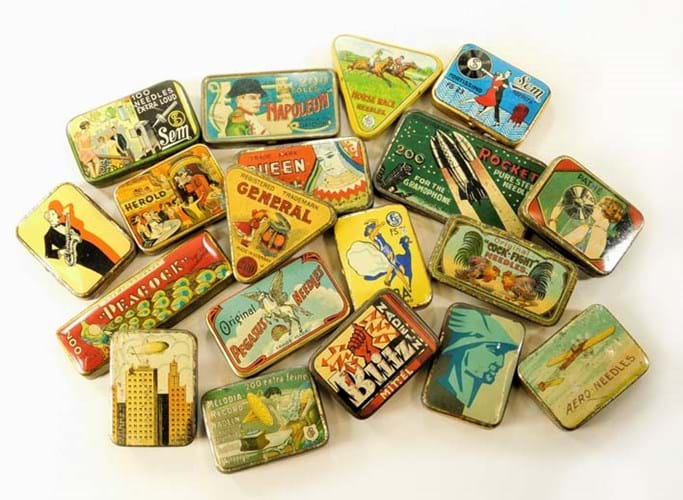
They became one of the passions of Julian Dickinson (1956-2013), who was already a collector of antique chess sets and games, guitars and vinyl records. His interest was sparked by a seemingly light-hearted Valentine’s Day gift of a HMV needle tin from his partner.
The unexpected consequences of that present are now on offer at Barbara Kirk Auctions in Penzance, Cornwall, where his collection will be offered as a dedicated section on the second day the May 1-2 Antiques, Art & Collectors sale.
It consists of more than 600 tins to be sold individually or as multiple lots of up to 10 or more. The group includes many scarce tins from brands manufactured in the UK, Germany, France, Japan, Czechoslovakia, the US and elsewhere. (Above image supplied & attached)
The saleroom says: “As a musician, artist and design teacher, the miniaturised graphics with a music connection represented in gramophone needle tins established an immediate attraction and sparked his interest.
“Subsequently, this interest, as well as his collection, grew quickly and within seven years his collection amounted to over 800 tins. The tins from his collection to be sold in the auction include many from around the world, including scarce examples, as well as many variations of well-known UK brands.”
Getting the needle
Looking online, Dickinson’s gramophone needle tin obsession is obviously shared by others.
According to one of the collector websites (for gramophones as a whole), thegramophonecollector.com: “The market for steel needles was vast as the majority were designed to be used only once before being replaced, so an average sized tin of 200 wouldn’t last too long.
“Consequently needles were produced in huge quantities by manufacturers in Great Britain and Germany and there were popular brands which represented the makers of machines such as Columbia, Decca and HMV together with record labels such as Regal.
“There were also makes like Songster and Embassy which were needle brands in their own right and each of these would be available in a range of thickness (soft, medium or loud), various different designs and, quite often, different colours. For advertising purposes it was also common for dealers to have tins produced with their own name and details on the underside so, as you can imagine, the scope for variation in needle tins is huge with some collections running into 100s or even 1000s of examples.”





